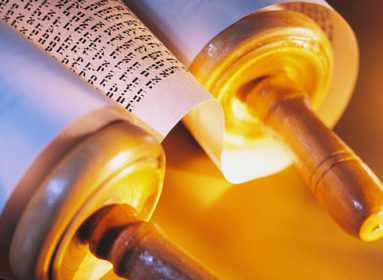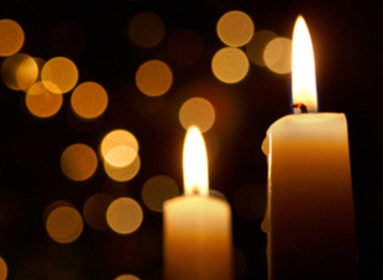
By Rabbi Tzvi Hersh Weinreb
I picked him up at the airport. He was arriving in Baltimore, where I was then a rabbi, to deliver an address and then return home to New York. The plane was late, so that when he came, I told him that we would have to hurry to be at our destination on time. He was already showing signs of age, so that walking quickly was hard for him.
We moved rapidly past the gates, at which other flights were disembarking, including one at which the arriving passengers were being welcomed warmly by friends and family. That is where he stopped, transfixed. He could not take his eyes off the scene of the small crowds embracing and kissing each other tearfully and emotionally. Reluctantly, he responded to my rude insistence that we move on, and together we rushed to his appointment.
He was Rav Avrohom Pam, of blessed memory, the late lamented sage, yeshiva dean, mentor to hundreds of rabbis and scholars, and above all, gentle soul. Later, I asked him what it was about the airport scene that so fascinated him.
His response was the greatest lesson of the many I learned from him. “The saddest of all human happenings is separation,” he said. “And the most wonderful of all is reunion. Whenever I see people … joyfully coming together after a long separation, I feel spellbound.”
This week’s Torah portion, Lech Lecha, allows us to reflect upon the phenomenon of separation, in Hebrew, p’reida. The Torah describes the close relationship between Abraham and his nephew, Lot. It is a relationship that began in the “old country” and continued through Abraham’s adventurous journey to and through the Land of Canaan. As both prospered, we are told, “Thus they parted from each other; Abram remained in the land of Canaan, while Lot… pitched his tents near Sodom.”
This decision to separate was a fateful one for Lot. He settled in Sodom, rose to a prestigious position there, and we will yet learn more about his new life in next week’s portion. He tried to mitigate the effects of the separation by remaining loyal to the precepts he learned in Abraham’s tent, a difficult challenge in his new circumstances.
At the same time, Abraham did not forget his nephew. Even after the separation, he stayed in touch with him from afar and rushed to his aid when Lot was captured by a marauding army.
This dramatic story of the separation of two close companions may be the first on record, but it is certainly not the last.
Personally, I have long been intrigued by the stories of siblings separated at an early age who rediscover each other later in life. One example is the reunion of the 90-year old Torah sage, Reb Yaakov Kamenetsky, who, after a 70-year separation, rediscovered his sister in the former Soviet Union. He was steeped in traditional Judaism; she had become totally removed from any semblance of Jewish religion. When one of Reb Yaakov’s sons tried to explain to his long-lost aunt what her brother had accomplished in his life, she could only respond that it was a shame that a lad with such youthful promise grew up to become a mere melamed, a school teacher.
But there are poignant examples of separated individuals who, despite growing up in radically different environments, end up similar. How well I remember an adolescent psychotherapy patient of mine who was adopted in infancy by a professor of physics and his wife, a noted art historian. They were frustrated by this teenager, who was interested neither in intellectual nor cultural pursuits, but whose goal in life it was to become a fireman, and who spent all his spare time as a fire department volunteer. After several years, I received a call from the young man telling me that he had since successfully located his biological father — a veteran fireman!
Separation is part of human life, so much so that in Jewish mystical liturgy this world is called the “world of separation,” alma d’piruda.
Abraham and Lot once were very similar. They separated, intentionally. Yet there were invisible and mysterious bonds that linked them. Of some, we read in the Torah portions of this week and next, but others surface generations later, with the story of Ruth, the descendent of Lot’s grandson, Moab, and her reunion with Abraham’s people. Ultimately, King David himself becomes the symbol of the reunion of the uncle and nephew of whose separation we read this Shabbat.
No wonder then, that the mystical text that calls this world the alma d’piruda, calls the next, better world the alma d’yichuda, “the world of reunion,” the world in which we will all be together.
Rabbi Tzvi Hersh Weinreb is executive vice president, emeritus of the Orthodox Union. His newly released book, Person in the Parasha: Discovering the Human Element In the Weekly Torah Portion, is a compilation of his “Person in the Parsh” columns. For more information, visit www.ou.org.








 Southern New England Jewish Ledger
Southern New England Jewish Ledger










